The Karma Map Dome – Building with Bamboo at Tribal Earth
The Karma Map dome quickly became a focal point at Tribal Earth Festival — children played inside, friends gathered beneath its arcs, and at one point a musician even staged an impromptu gig within its walls. Here’s how it came about.
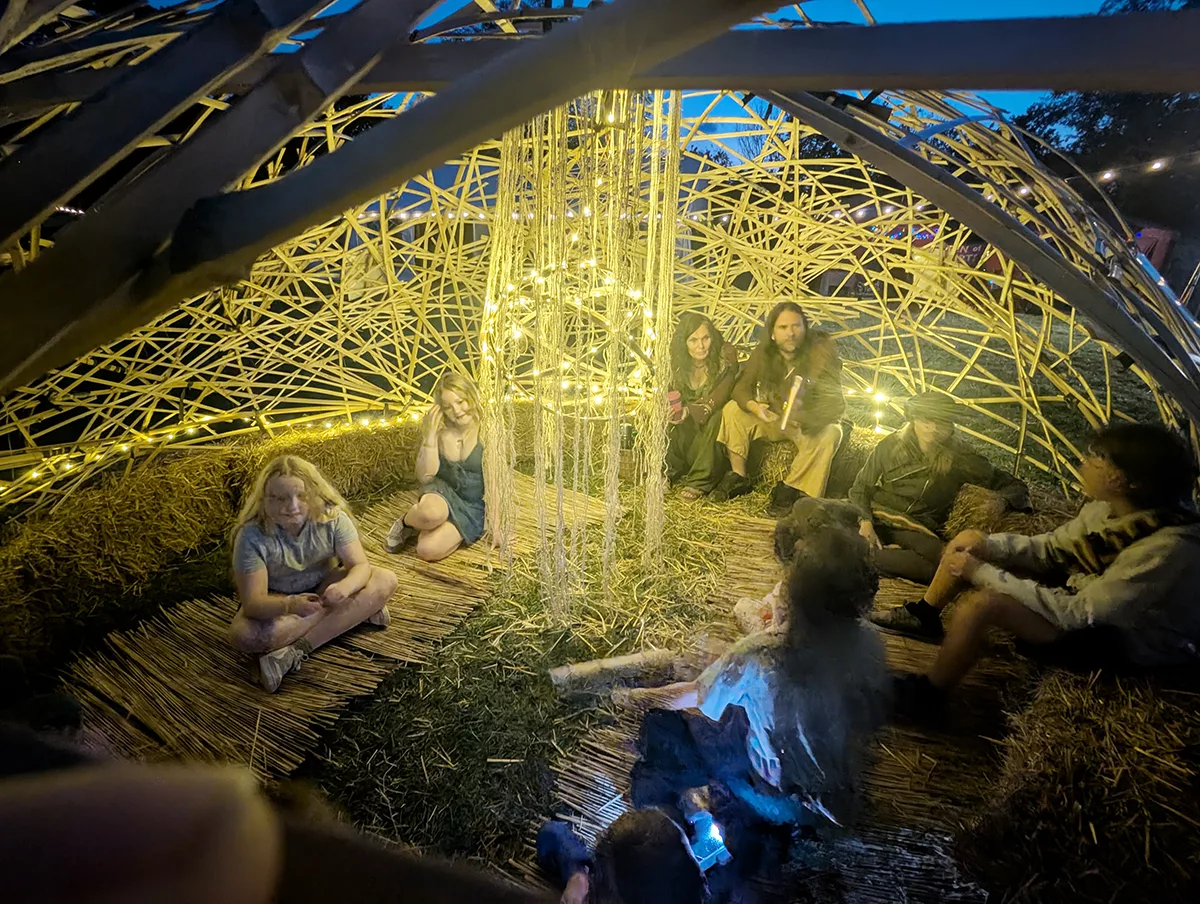
Before I began, I knew I wanted to create a cocooning space where people felt held – a place that suggested there is a hidden pattern guiding us, even when we feel lost. I called this the Karma Map. The idea came from the bamboo weave itself, which from below has always reminded me of an astrological chart. Just as the stars form constellations, perhaps our lives follow threads of karma we can learn to read.
I also knew I wanted the dome to come alive at night. Too often I’d seen daytime structures — yoga spaces, gathering tents — lose their magic after dark and turn into empty, unused shells. For this build, I set out to create something different: a space that could shift into a night-time chillout dome, glowing from within and inviting people to step inside, rest, and connect under the stars.
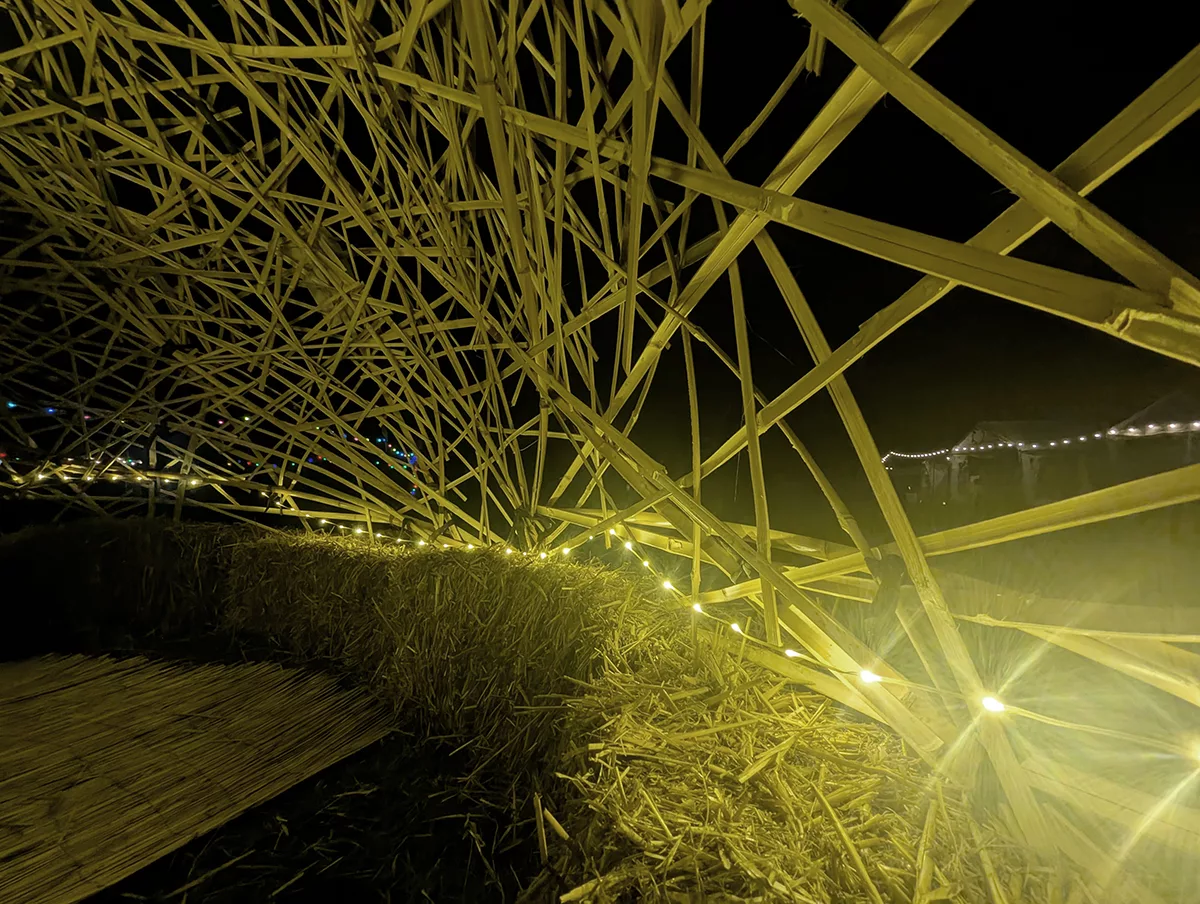
Main Structure
Instead of the simple half-circle doorway I’d used before, I designed a conch-shaped structure formed from two overlapping leaf shapes. The more complex form created a richer entrance experience – more like stepping into something alive than just walking through an opening.
As usual, the process began with models. While experimenting, I discovered a new technique: connecting bamboo splits into figure 8s with strips of bicycle inner tube (essentially giant elastic bands), then linking those 8s into a mesh. This approach let me prefabricate large sections on the ground before raising them — something I’d first learned the importance of at BambooU in Bali.
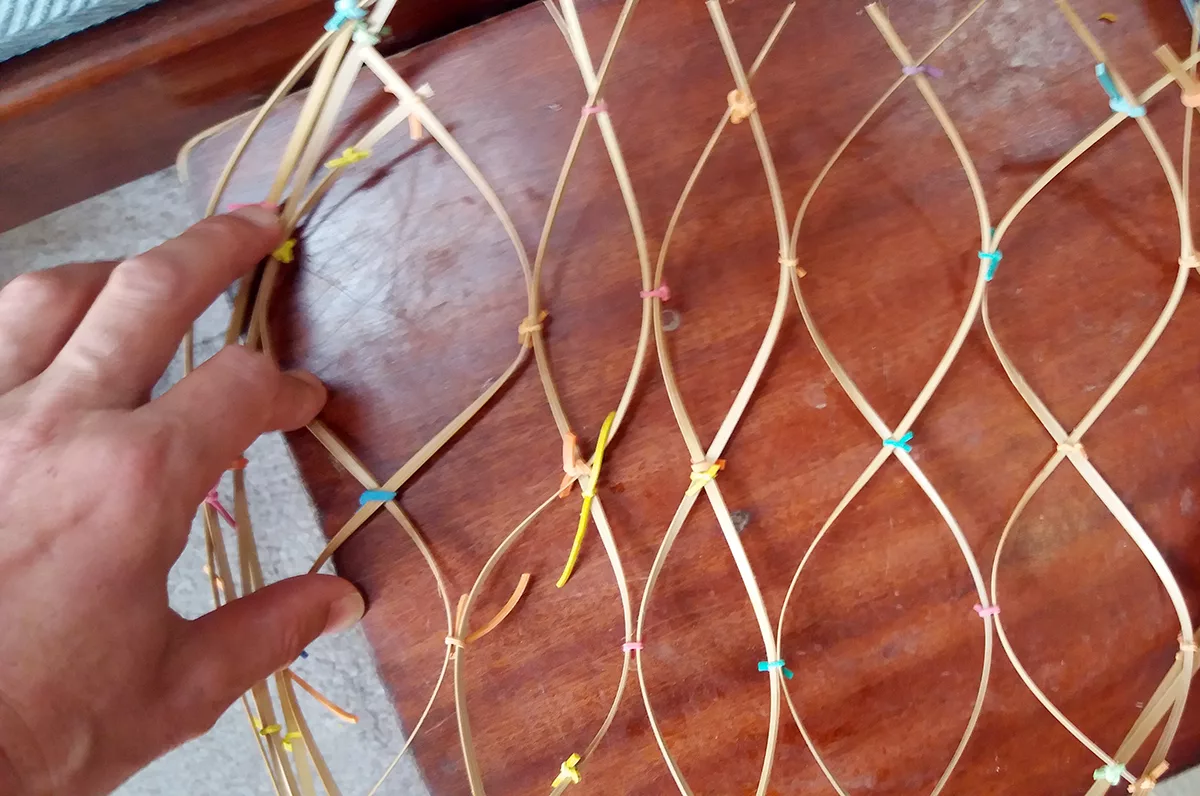
Scaling up was another story. With 8m splits, the mesh turned out far floppier than the models suggested. It flapped wildly until we stabilised it with vertical arches, tied into the mesh with rubber. Bit by bit, the chaos resolved into the leaf forms I’d imagined.
Once the structure was up and the festival began, festivalgoers joined in the weaving. Building the main frame is too ambitious for volunteers, but weaving bamboo splits is perfect — meditative and intuitive. One participant said, “I don’t have to think,” as they worked. It became a shared act of making.
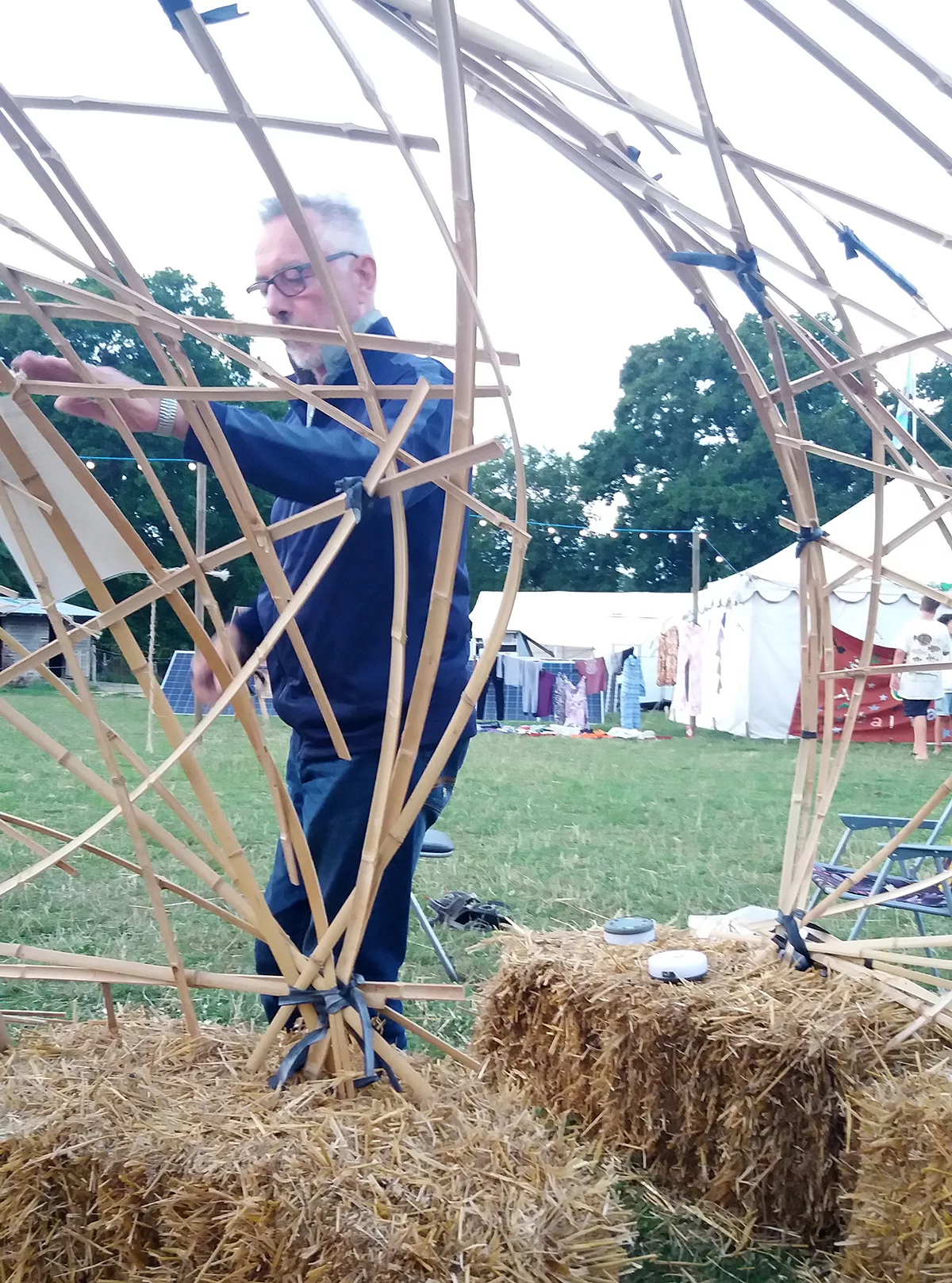
For the weave itself, I borrowed an idea from Cave Urban, combining different thicknesses: sturdy 3 cm splits for the frame, finer 1 cm splits for the infill. This gave the dome a denser skin.
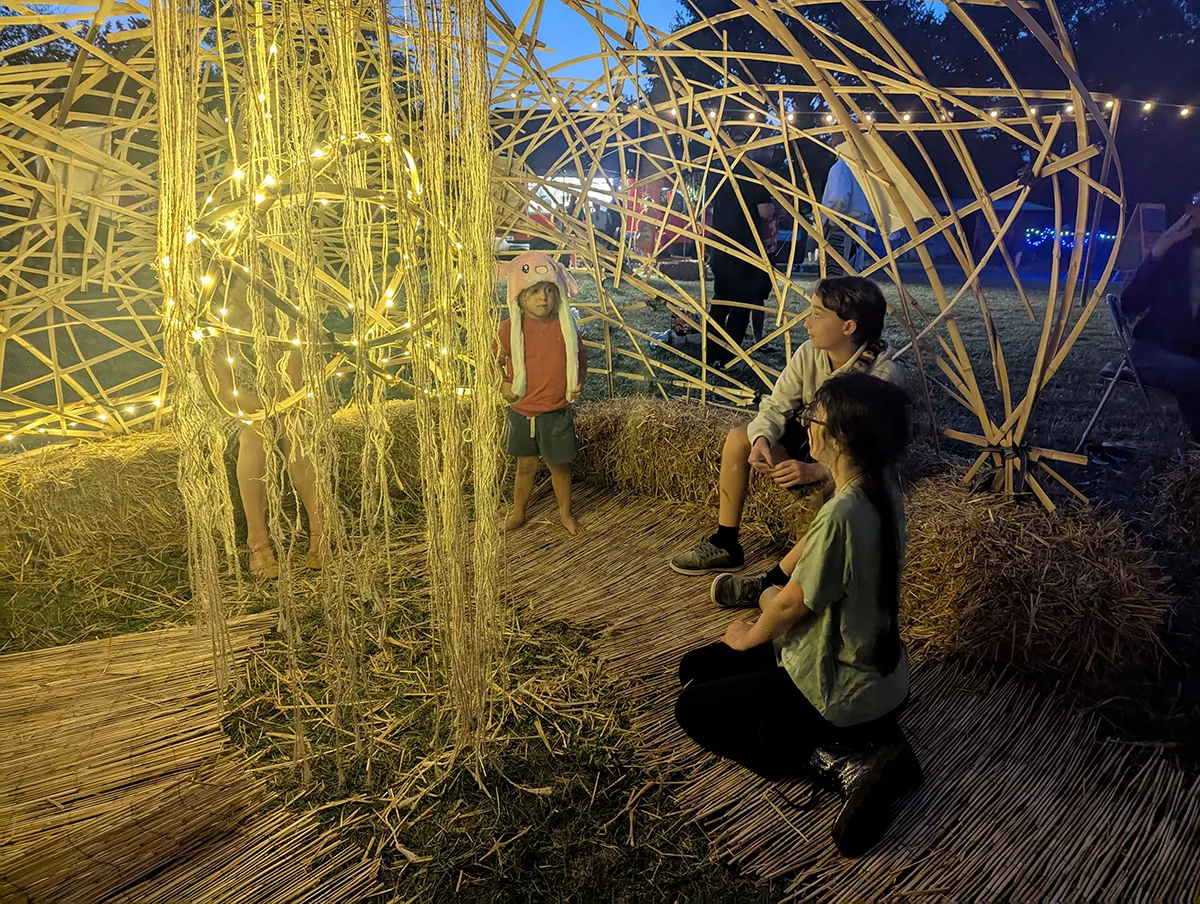
Interiors and lighting
By the end of the festival’s first day, the main structure stood complete. We also added small circular “windows” inspired by hill tribe designs from northern Thailand. When the main weave had been completed these windows wee not really visible – a lesson for next time: make them bigger.
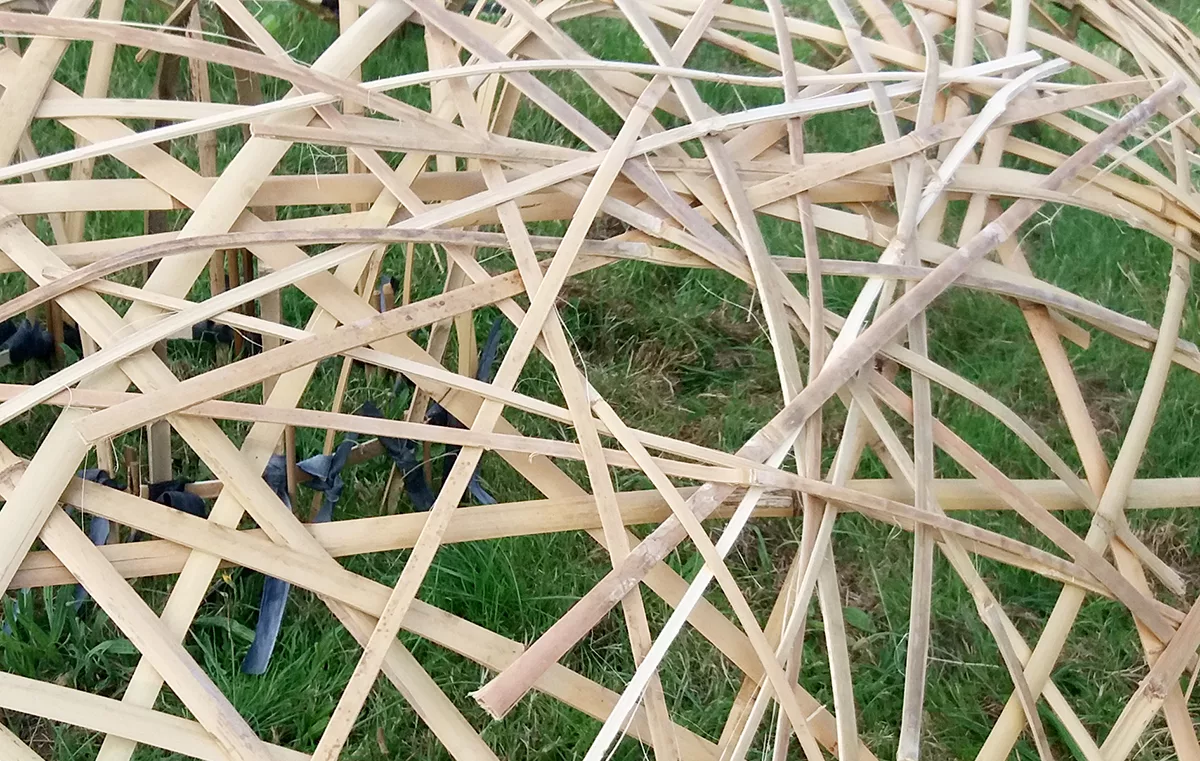
What remained was the lighting — something I’ve struggled with. Without AC power, the options were either inverters and generators, or low-voltage DC. At a previous festival some kids had once rigged programmable LEDs into the dome for a party, which looked incredible, but the cost was prohibitive. This time I used solar-powered LED string lights, which worked beautifully.
Inside, I wanted a glowing centrepiece: a suspended orb of light people could gather around. Inspired by Margherita Bertoli‘s installations that use hanging rope, I built a bamboo-ring “helmet” wrapped with LEDs and suspended it inside a string circle. Visitors could pop their heads into it, glimpsing the star-like weave of the dome from within. Children, in particular, loved it.
The Karma Map became more than just a dome. It was a structure born from sustainability, experimentation, and participation — a space that invited people to lose themselves in patterns of light and bamboo, and maybe to glimpse a hidden map of their own.
